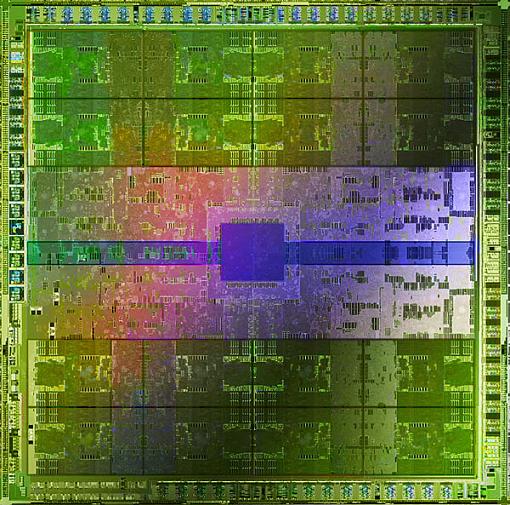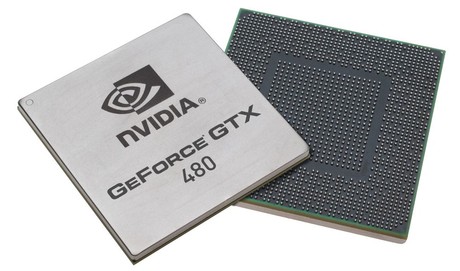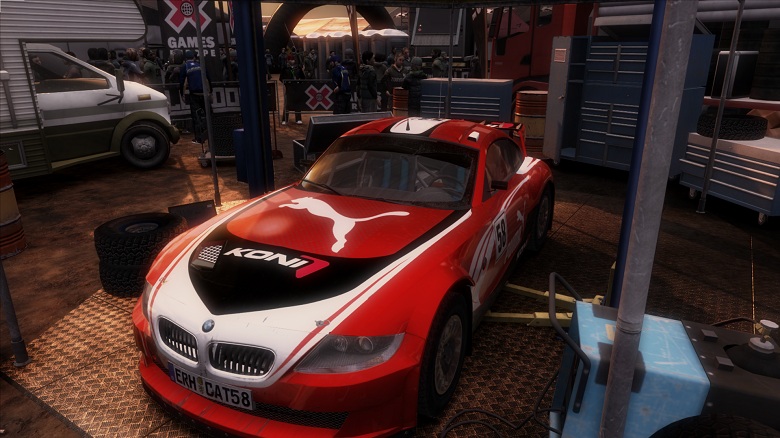GeForce GTX 480

At the end of 2006, NVIDIA launched the eighth generation of its GeForce video cards. The flagship of the line was the powerful NVIDIA GeForce 8800 GTX accelerator at that time, which was significantly ahead of AMD's top model of those times, the Radeon X1900 XTX, in terms of performance and manufacturability. In order to successfully compete with NVIDIA, AMD needed to create a new top-end accelerator, but due to a series of technological problems, the new Radeon HD 2900 XT came out about half a year late.
A similar situation happened to NVIDIA at the end of 2009. With the release of the first accelerator of the AMD Radeon HD 5xxx family - the Radeon HD 5870, NVIDIA lost its "leader's jersey" among single-chip Hi-End solutions, and then, as the line of AMD graphics accelerators expanded, it began to lose ground in almost all segments of the desktop market. charts.
And now, six months later, NVIDIA has finally been able to produce a sufficient number of graphics chips of the new architecture. On March 26, 2010, the latest NVIDIA GeForce GTX 470 and GeForce GTX 480 graphics accelerators were announced.

Contrary to expectations, the senior accelerator of the family - NVIDIA GeForce GTX 480, received not 512 CUDA cores, as previously stated, but only 480. In addition, the changes affected texture units, their number is 60, instead of the previously announced 64. But all 48 units ROP and the promised memory bus width of 384 bits remained in place.

16 blocks of the same type (SM) are clearly visible, occupying two-thirds of the core. I / O interfaces are located, naturally, along the perimeter of the crystal. And this is what the already packed GF100 looks like:

The GeForce GTX 480 is vastly superior to the previous top model, the GeForce GTX 285, in almost every aspect. Especially worth noting is the doubled number of CUDA cores, which will undoubtedly have a positive effect on the speed of complex shaders. Also, the new NVIDIA accelerators received the long-awaited support for DirectX 11.

In addition, the GeForce GTX 470/480 supports a technology called NVIDIA Surround, similar to ATI Eyefinity. NVIDIA Surround allows you to use three monitors simultaneously as a single workspace. However, in implementing their version of the technology of full immersion in the virtual world, the Californians decided to go even further and created a "technological mix" of NVIDIA 3D Vision and NVIDIA Surround, which is called NVIDIA 3D Vision Surround. The essence of this "cocktail" is that you can use three monitors and 3D Vision glasses at the same time to create the maximum effect of presence.
The GeForce GTX 480 graphics card uses a 26.7 cm (10.5") PCB, which is about a centimeter shorter than the Radeon HD 5870. Additional power (in addition to the PCI Express bus) requires connection of one six-pin and one eight-pin plugs. Nvidia says, that the board has a TDP of 250W - substantially less than the Radeon HD 5970, which barely fits under the PCI-SIG's 300W ceiling, and Nvidia recommends a 600W PSU or higher.
But the story does not end with the card's additional power supply. Although the GeForce GTX 480 seems to be less "gluttonous" than AMD's flagship in terms of specifications, there were clearly problems with the cooling of the video card. The card cooler is, in our opinion, the most aggressive reference design we've seen so far. The heat sink removes heat from the surface of the GPU and memory chips. Four heatpipes transfer heat to an array of aluminum fins, while a dedicated fan blows air through the shroud and fins, eventually expelling it through the back of the graphics card.

The hottest element of the GeForce GTX 480 is the GPU. For its cooling, a radiator with five heat pipes, made using direct contact technology, is used. All five tubes through a thin layer of thermal paste are in contact with a metal cover that protects the graphics core.

The GPU power system uses six phases and is based on the CHL8266 PWM controller. Unlike the power elements manufactured by Volterra, which are assembled in one package, the power elements in the GeForce GTX 480 power subsystem are made according to a discrete circuit. There are transistors for each power phase (one in the upper arm and two in the lower). This approach allows you to better remove heat from the elements of the power subsystem.
Specifications NVIDIA GeForce GTX 480
| Name | GTX 480 |
| Core | GF100 |
| Process technology (µm) | 0.040 |
| Transistors (million) | 3000 |
| Core frequency | 700 |
| Memory frequency (DDR) | 3696 |
| Bus and memory type | GDDR5 384-bit |
| Bandwidth (Gb/s) | 177 |
| Unified shader blocks | 480 |
| Frequency of unified shader units | 1400 |
| TMU per conveyor | 60 |
| ROP | 48 |
| Shader Model | 5.0 |
| Fill Rate (Mpix/s) | 29500 |
| Fill Rate (Mtex/s) | 45000 |
| DirectX | 11.0 |
| Memory | 1536 |
| Interface | PCIe 2.0 |
Tests demonstrate the confident superiority of the GeForce GTX 480 over the Radeon HD 5870 (in most benchmarks, the card occupies an intermediate position between the HD 5870 and HD 5970), at the same time, the older Cypress slightly outperforms the GeForce GTX 470. Of course, Fermi deserves attention, but about comfortable using these cards at 60+ dBA of noise and at 90+ degrees on the core can be forgotten. Those who certainly want to see NVIDIA GeForce in their system should probably wait for the "colder" revisions of the GeForce GTX 480 and GTX 470. But whatever one may say, the GeForce GTX 480 rightfully receives the performance crown for single-chip solutions and competitors will be able to take it away from it still not soon.
Dirt 2 DirectX 11




